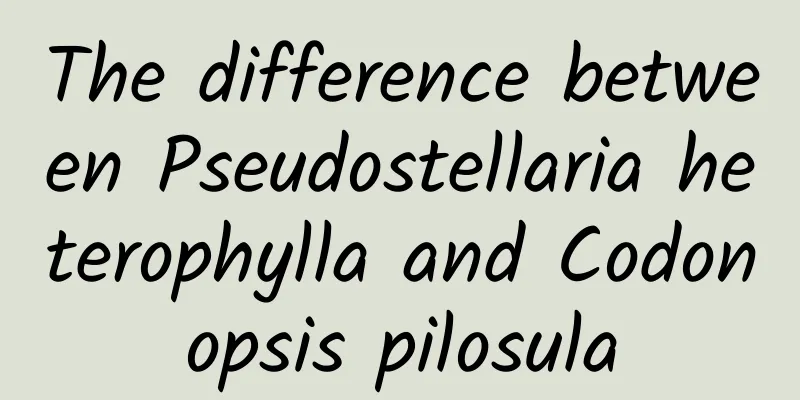The difference between Pseudostellaria heterophylla and Codonopsis pilosula

|
Nowadays, people pay more and more attention to health care. After all, only when you are healthy can you work and live better. Among all kinds of supplements for health and wellness, ginseng is recognized as a great tonic for vitality. There are many types of ginseng, including Codonopsis pilosula, Panax pseudoginseng, etc., and they all have different effects. So what are the differences between the different types? Let us introduce the differences between Pseudostellaria baicalensis and Codonopsis pilosula. Codonopsis appearance and function 1. Codonopsis pilosula has an oval appearance, and is yellow-brown on the surface and yellow-white on the cross section. It may have patterns similar to chrysanthemums, with a light yellow center in the middle and a light yellow color around it. It has a special aroma, and its smell is relatively sweet. 2. Codonopsis has the effects of tonifying the middle and replenishing qi, anti-cancer, lowering blood pressure, strengthening the spleen and lungs, anti-hypoxia, and anti-aging. Regular consumption can effectively enhance the body's immune ability, increase the activity of superoxide, and help us to comprehensively eliminate free radicals. It can also deal with ulcers, regulate gastrointestinal motility, and effectively reduce the enzyme activity of gastric protein. It is very suitable for people with shortness of breath, palpitations, ulcers, anemia, internal heat, and thirst. Appearance and function of Pseudostellaria heterophylla 1. The appearance of Pseudostellaria heterophylla is a long and thin strip with a diameter of about 0.2 cm and a length of about 3 to 10 cm. The surface is very smooth with occasional wrinkles. Root traces can be seen in the depressions. The cross section is relatively flat, but has a light yellow color and a sweet smell. 2. Pseudostellaria has the effects of invigorating qi and strengthening the spleen, promoting fluid production and moistening the lungs. It is very suitable for people with loss of appetite, weakness after illness, spleen deficiency, and insufficient qi and yin. It can also improve dry cough due to lung dryness, spontaneous sweating and thirst. In life, we must have some understanding of these two different Chinese medicinal materials. Although Pseudostellariae Radix and Codonopsis pilosula are both products of ginseng and have certain nutritional value, their appearance and functions are completely different. I hope everyone will understand these contents before taking them and never confuse them. Otherwise, not only will they not be able to achieve the effect of treating the disease, but it will delay our condition. |
<<: The difference between Dipsacus asper and Dandelion
>>: The efficacy and function of rice ginseng
Recommend
They're not the only ones who eat poop. You may have eaten it, too.
END Original long picture of tadpole stave/reprin...
Can I eat chili peppers after taking Chinese medicine?
In some parts of our country, people have the hab...
The cold winter is coming, what is the best way to keep warm in winter?
The strongest cold wave in the second half of thi...
Big-eared Tutu's "ear-moving magic" is actually a kind of atavism!
Audit expert: Wu Xinsheng Deputy Chief Physician,...
How much does saffron cost
Chinese medicine stores are places that everyone ...
What are the medicinal properties of Dendrobium officinale?
Maybe you don’t know much about Dendrobium. Dendr...
The efficacy and effects of Astragalus and Lycium barbarum
Selecting suitable Chinese medicinal materials an...
The efficacy and function of Tangut Qinglan seedlings
Do you know about Tangut Qinglan seedlings? It is...
Another fitness move is going viral! A man's hemorrhoids ruptured after trying it! Doctor: Not suitable for everyone...
In the movie, Ip Man is a master of martial arts,...
Sichuan medicinal herb planting
Sichuan is suitable for planting Chinese medicina...
See the efficacy and function of serum
As people's living standards continue to impr...
Microphone in the universe: Why do scientists want to listen to the sounds of alien worlds?
NASA's Perseverance rover, currently working ...
What are the effects and ways to eat maca?
Maca actually contains relatively many nutrients,...
The efficacy and function of the hairy-leaved croton tree
The hairy-leaf croton tree is a kind of tradition...
What does glass that can regulate sunlight look like?
Produced by: Science Popularization China Produce...









